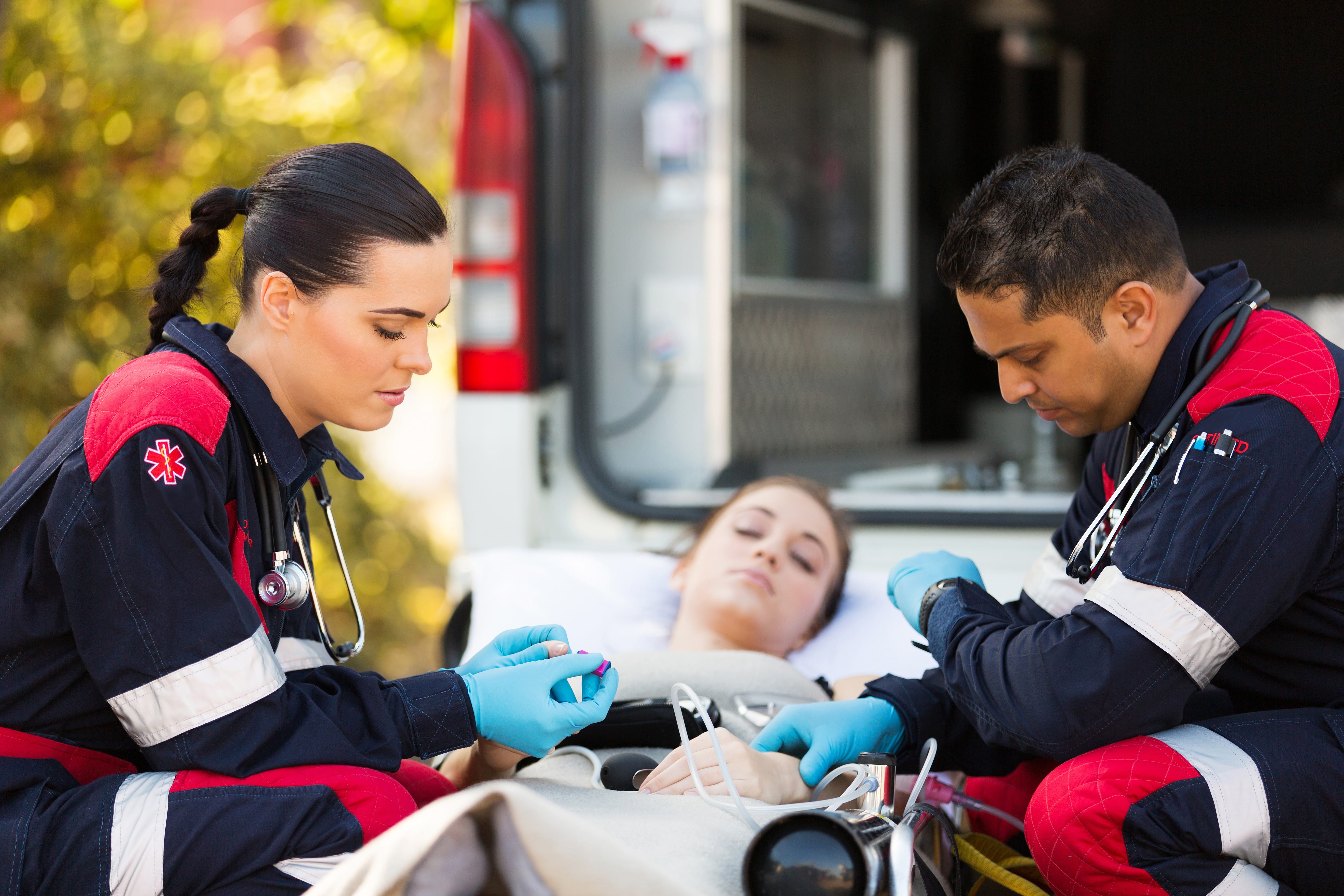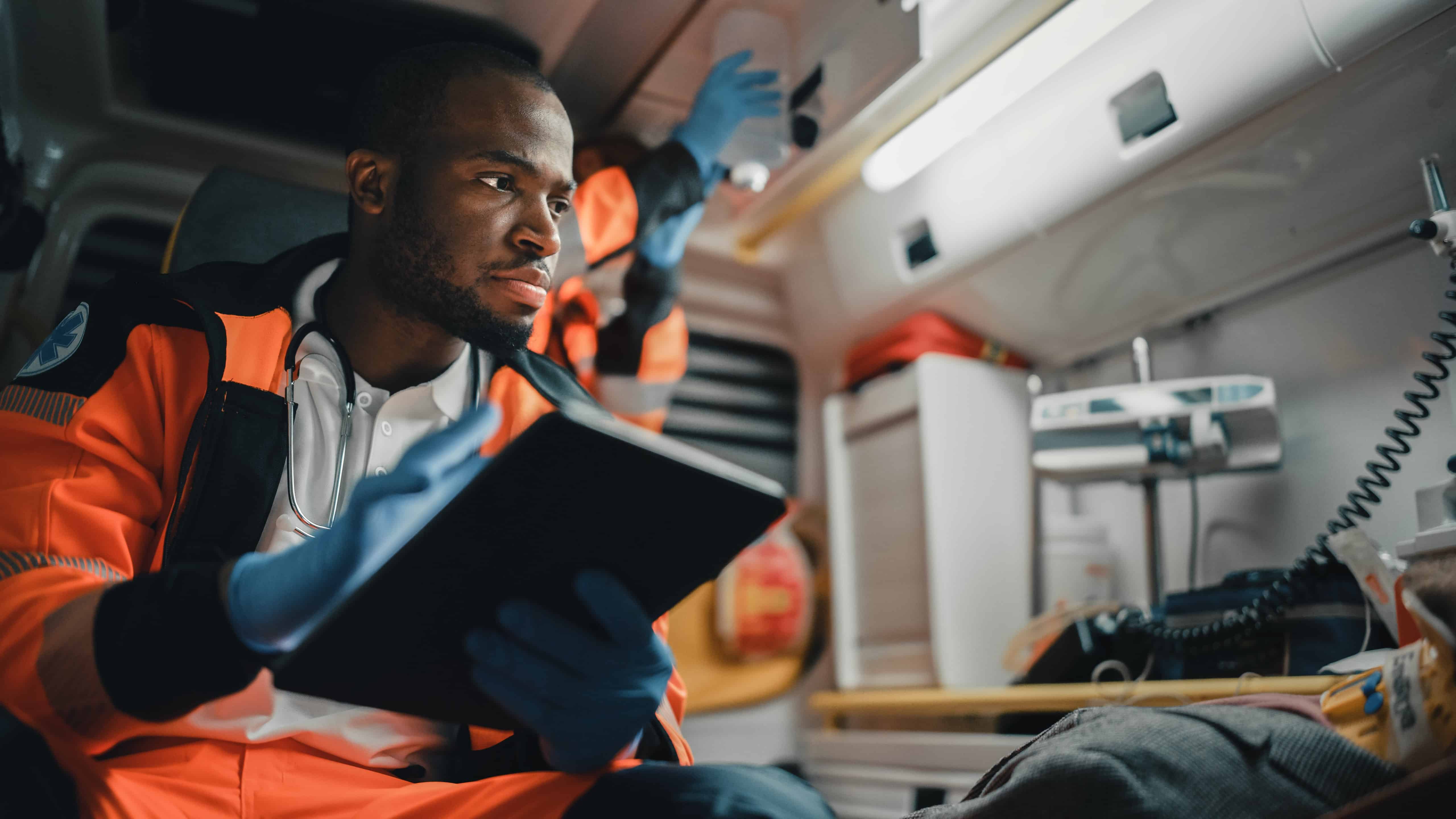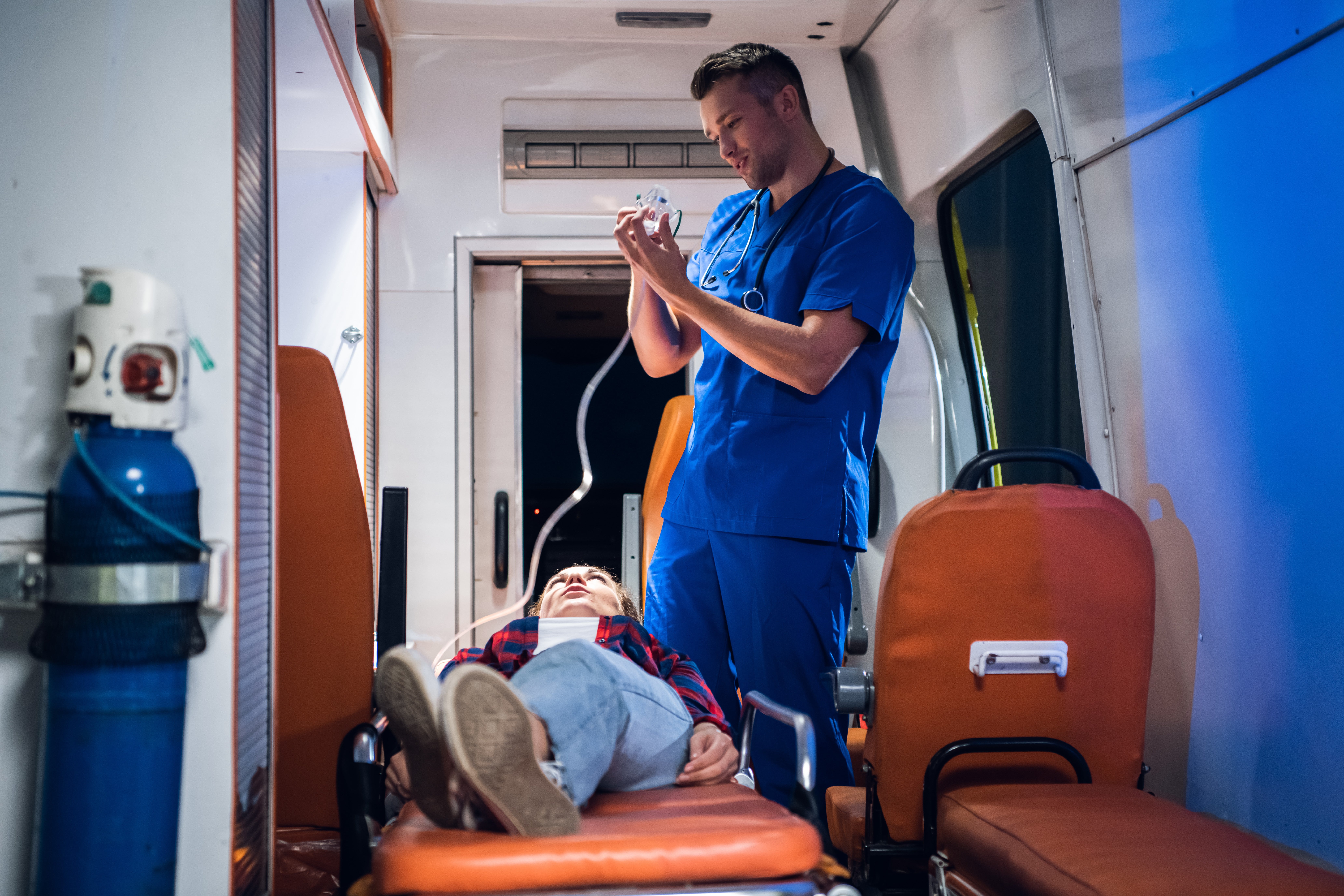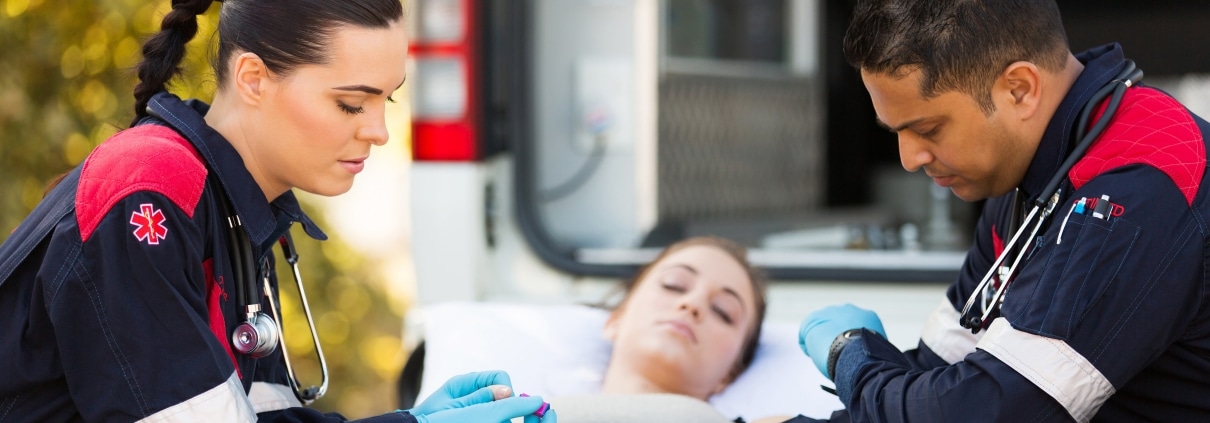15 Management Tips for EMTs During High-Pressure Situations
Learn how EMTs can navigate the demands of their profession with confidence and professionalism

Emergency Medical Technicians (EMTs) are unsung heroes who navigate the chaotic realm of emergency situations with unwavering determination and expertise. These dedicated professionals are the first responders, providing critical care and support when every second counts. The demanding nature of the EMT profession puts these individuals in high-pressure situations where their ability to effectively manage themselves and the circumstances at hand can mean the difference between life and death. This article delves into the challenges faced by EMTs and highlights the profound significance of effective management during these intense and demanding moments.
The nature of EMT work is characterized by a constant state of uncertainty, where they must think on their feet, adapt rapidly, and make critical decisions under immense pressure. EMTs encounter a wide range of challenging situations, including traffic accidents, cardiac arrests, respiratory distress, and trauma incidents. They must swiftly assess the situation, administer appropriate medical interventions, and transport patients to the nearest medical facility while providing continuous care throughout the process. As such, EMTs must exhibit exceptional organizational skills, clear communication, and the ability to remain calm and focused. Learn more in this comprehensive career overview on how to become an EMT.
By developing strong decision-making abilities, fostering team coordination, nurturing emotional resilience, and mastering resource management, EMTs can navigate the emergency storm with confidence, professionalism, and compassion. As we recognize the invaluable service provided by these brave healthcare professionals, let us acknowledge the significance of effective management in ensuring the best possible care for those in need.
Understanding the Challenges of High-Pressure Situations
Emergency Medical Technicians (EMTs) encounter a multitude of unique challenges in high-pressure situations, where their ability to effectively manage themselves and the circumstance at hand becomes paramount. The fast-paced and unpredictable nature of emergency situations adds an extra layer of complexity to the EMT profession. Quick decision-making is a crucial skill because EMTs must rapidly assess a situation, gather information, and make critical decisions regarding treatment, prioritization, and resource allocation. The consequences of delayed actions can be severe, as precious seconds can mean the difference between life and death or the prevention of long-term complications. The challenges faced by EMTs are as varied as the emergencies. For example, often EMTs must navigate through heavy traffic and adverse weather conditions and provide care in chaotic environments. Additionally, EMTs must adapt to diverse patient populations, cultural sensitivities, and unexpected complications that may arise during the course of their interventions.
EMTs witness the pain, fear, and suffering of patients and their loved ones. They often find themselves in emotionally charged environments, requiring them to remain composed, empathetic, and supportive while managing their own emotions. The emotional stress of the job can accumulate over time, making self-care and debriefing essential for their well-being. Effective management is crucial for ensuring the best possible outcomes for patients. EMTs must coordinate with their team members, communicate clearly, delegate tasks, and work collaboratively to deliver efficient and timely care. They must also manage limited resources and time constraints, optimizing their efforts to provide the highest level of care possible.
15 EMT Management Tips for EMTs in High-Pressure Situations
Below is a list of the top 15 tips that EMTs should employ during high-pressure emergency situations. Each tip is comprehensively defined with tangible applications and concluded with the benefits that are specific to applying that tip successfully. Ultimately, all 15 of these tips help ensure optimal patient outcomes, which is the overarching goal in emergency medical services.
1. Maintain Clear and Concise Communication
In the chaotic environment of emergency situations, clear communication becomes the lifeline that connects the entire team and ensures seamless coordination. By conveying information accurately and succinctly, EMTs can streamline their actions, prevent misunderstandings, and optimize the use of available resources. Clear communication enables EMTs to share critical updates, assign tasks, and relay vital patient information to medical facilities, ensuring a smooth transition of care. Additionally, concise communication helps manage the limited time available, allowing EMTs to focus on essential tasks and make informed decisions promptly.
By adhering to this tip, EMTs can enhance their efficiency, minimize errors, and ultimately increase the chances of successful outcomes for their patients.

2. Establish Rapport
In these critical moments, building a connection with patients and their loved ones can significantly impact the overall care experience. By establishing rapport, EMTs create a foundation of trust, empathy, and understanding, which can help alleviate anxiety and foster cooperation. When patients and their families feel heard and supported, they are more likely to provide crucial information about medical history, symptoms, and concerns, enabling EMTs to make more informed decisions and deliver tailored care. Moreover, a positive rapport can help EMTs manage the emotional stress of the situation, as patients and their loved ones may find solace in their presence and compassionate demeanor.
By prioritizing the establishment of rapport, EMTs can enhance the overall quality of care, apply cultural sensitivity, promote collaboration, and ultimately contribute to better patient outcomes in high-pressure situations.
3. Prioritize Tasks
In emergency scenarios, time is of the essence, and EMTs often face multiple simultaneous demands. By prioritizing tasks, EMTs can ensure that critical actions are addressed promptly and efficiently. This involves identifying the most urgent and life-threatening needs of the patient, such as managing the airway, controlling bleeding, or initiating CPR. By focusing on these immediate priorities, EMTs can stabilize the patient’s condition and provide essential interventions that may be lifesaving. Prioritization also helps in managing limited resources effectively, ensuring that equipment, medications, and personnel are allocated optimally.
By making informed decisions about task prioritization, EMTs can maximize their efficiency and navigate high-pressure situations with a clear focus on providing the best possible care.
4. Utilize Critical Thinking
Critical thinking involves the ability to analyze information, evaluate options, and make informed decisions based on the available evidence and circumstances. In emergency scenarios, EMTs often encounter complex and rapidly evolving situations where there may not be a straightforward solution. By applying critical thinking skills, EMTs can assess the patient’s condition, identify potential causes, and consider different treatment approaches. They can evaluate the risks and benefits of various interventions and adapt their plans accordingly. Critical thinking also enables EMTs to anticipate potential complications, troubleshoot challenges, and adjust their strategies in real time.
By engaging in this process, EMTs can make sound decisions, provide effective care, and increase the likelihood of positive outcomes for their patients in high-pressure situations.
5. Adapt to Changing Situations
In emergency scenarios, circumstances can rapidly evolve, presenting unexpected challenges and requiring quick adjustments. Adapting involves the ability to remain flexible, think on one’s feet, and modify strategies as needed. EMTs may encounter unforeseen complications, fluctuations in a patient’s condition, or external factors such as adverse weather conditions or resource limitations.
By embracing adaptability, EMTs foster resilience, learn to manage uncertainty, maintain composure, and confidently address the evolving demands of high-pressure situations.
6. Recognize Stress Symptoms
The nature of their work exposes them to emotionally and physically demanding situations, which can lead to significant stress. By being aware of stress symptoms, EMTs can identify and address the impact of stress on their well-being and performance. Symptoms may include increased heart rate, difficulty concentrating, irritability, or feelings of overwhelm. Recognizing these signs allows EMTs to take proactive steps to manage stress, such as practicing self-care techniques, seeking support from colleagues or professionals, and engaging in stress-reducing activities.
By acknowledging and addressing stress symptoms, EMTs can maintain their mental and emotional well-being and alleviate potential burnout, thus prolonging the sustainability of their career.

7. Employ Effective Stress Management Techniques
Employing effective stress management techniques is a crucial tip for EMTs to navigate high-pressure situations successfully. The demanding nature of their profession exposes EMTs to significant stress, which can impact their mental, emotional, and physical well-being. By employing effective stress management techniques, EMTs can mitigate the negative effects of stress and maintain their resilience. These techniques may include engaging in regular exercise, practicing mindfulness or meditation, seeking social support, maintaining a healthy work-life balance, and engaging in activities that promote relaxation and self-care.
By incorporating these techniques into their routine, EMTs can better cope with the pressures of their job, reduce burnout, and sustain their performance in high-pressure situations.
8. Foster Teamwork and Collaboration
In emergency scenarios, EMTs often work as part of a team alongside fellow healthcare professionals, dispatchers, and other first responders. By fostering teamwork and collaboration, EMTs can create a cohesive and efficient working environment. This involves open communication, mutual respect, and a shared sense of purpose. By working together, team members can divide tasks, delegate responsibilities, and support one another, ensuring that each aspect of patient care is addressed effectively. Teamwork also allows for collective problem-solving and the pooling of diverse perspectives and expertise. In high-pressure situations, the ability to rely on one another, coordinate efforts seamlessly, and trust in the competence of fellow team members can significantly enhance the quality and timeliness of care provided.
Ultimately, fostering teamwork and collaboration among EMTs contributes to a more efficient response and a supportive work environment that promotes success in high-pressure situations.
9. Emphasize Continuous Learning
The dynamic and challenging nature of emergency medical services requires EMTs to constantly update their knowledge and skills. Continuous learning involves actively seeking opportunities for professional development, staying updated with the latest medical advancements, and participating in training programs and workshops. Continuous learning is a mental muscle that requires constant attention.
By emphasizing continuous learning, EMTs can enhance their skills, maintain up-to-date knowledge, and promote professional growth. This allows them to better handle high-pressure situations, make informed decisions, and provide the highest quality of care to their patients.
10. Self-reflect and Debrief
The cornerstone of learning is reflection, which is when an individual begins to embody the learning and make it second nature. Debriefing plays a vital role in the aftermath of high-pressure situations because it involves reflecting on the experience, discussing the challenges faced, and evaluating the response and outcomes. Debriefing sessions allow EMTs to process the emotional and psychological impact of the situation, share insights and lessons learned, and identify areas for improvement. Similarly to continuous learning, self-reflection and debriefing is an emotional muscle that requires equal attention.
Through debriefing, EMTs can address any feelings of stress, trauma, or burnout that may have arisen during the incident. Moreover, it provides an opportunity for team members to offer support to one another and foster a culture of continuous improvement.

11. Stay Calm and Composed
Staying calm and composed is a fundamental tip for EMTs to navigate high-pressure situations successfully. In the midst of emergency scenarios, it is natural for stress and adrenaline to surge. However, maintaining a calm demeanor is crucial for several reasons. Firstly, it allows EMTs to think clearly and make sound decisions under pressure. By staying composed, they can assess the situation objectively, consider available options, and choose the most appropriate course of action. Secondly, a calm presence helps instill confidence and reassurance in both the patient and their loved ones. EMTs serve as a source of stability in chaotic circumstances, and their calm demeanor can help alleviate anxiety and promote cooperation. Finally, staying composed sets a positive example for the entire team, fostering a sense of unity and effective collaboration.
By demonstrating composure, EMTs can inspire others to stay focused, follow protocols, and work cohesively towards a successful outcome.
12. Follow Protocols and Guidelines
Protocols and guidelines serve as established standards of care based on evidence and best practices. By adhering to these protocols, EMTs can ensure a standardized approach to patient assessment, treatment, and management. Following protocols provides a systematic framework that guides decision-making and actions, especially in time-sensitive situations. It helps EMTs maintain consistency, enhance patient safety, and optimize outcomes. Protocols also promote efficient communication and coordination within the healthcare team, as everyone is working within the same framework. Moreover, adherence to protocols and guidelines can provide legal protection, as it demonstrates that EMTs followed accepted practices in delivering care.
By following protocols and guidelines, EMTs can navigate high-pressure situations with confidence, knowing that their actions are based on established standards.
13. Practice Compassion and Empathy
Compassion and empathy involve understanding and acknowledging the emotions and experiences of patients and their loved ones. In high-pressure situations, individuals may be frightened, anxious, or in pain, and showing compassion and empathy can help alleviate their distress. By taking the time to listen, validate their concerns, and offer words of comfort, EMTs can establish a trusting and supportive relationship. This connection fosters cooperation, enhances communication, and promotes a more positive experience for the patient. It also may help the EMT with information they need to be of better service to the patient. Moreover, practicing compassion and empathy not only benefits the patient but also has a positive impact on the emotional well-being of the EMT. It helps manage the stress and emotional toll of the job and reinforces the sense of purpose and fulfillment that comes from providing care to those in need.
By incorporating compassion and empathy into their practice, EMTs can create a compassionate and healing environment, enhance patient outcomes, and find personal fulfillment in their important work.
14. Build Situational Awareness
Situational awareness refers to having a clear understanding of the surrounding environment, including the patient’s condition, potential hazards, available resources, and the actions of other team members. By actively observing and assessing the situation, EMTs can make informed decisions and take appropriate actions. Situational awareness allows them to identify potential risks or complications, anticipate the needs of the patient, and adapt their approach accordingly. It also enables EMTs to effectively communicate with the healthcare team, coordinate efforts, and optimize the use of available resources. Building situational awareness enhances overall safety, improves efficiency, and contributes to better patient outcomes.
By staying vigilant and aware of their surroundings, EMTs can respond effectively to the demands of high-pressure situations, ensuring that the right actions are taken at the right time and ultimately succeeding in providing optimal care.
15. Maintain Physical Strength and Endurance
Maintaining physical strength and flexibility is a vital tip for EMTs to effectively navigate high-pressure situations and succeed in their demanding role. EMTs often face physically demanding tasks, such as lifting and maneuvering patients, performing CPR, and carrying heavy equipment. By prioritizing physical fitness, EMTs can develop the necessary strength, endurance, and agility to perform these tasks efficiently and safely. Physical strength enables them to handle the physical demands of the job, reducing the risk of injury and ensuring their own well-being. Additionally, being physically fit enhances EMTs’ ability to think clearly and make sound decisions under pressure, as physical fitness positively impacts mental acuity and overall cognitive function. Moreover, maintaining flexibility helps EMTs maneuver in tight spaces, adapt to challenging environments, and perform procedures with precision.
By dedicating time to regular exercise, stretching, and maintaining a healthy lifestyle, EMTs can enhance their physical capabilities, reduce the risk of fatigue, and better manage the physical challenges of high-pressure situations.

Start Your Career as an EMT
The demanding and high-pressure nature of the EMT profession requires navigating challenging situations effectively. By incorporating these tips and suggestions into their practice, aspiring and current EMTs can enhance their skills, improve patient care, and succeed in the challenging field of emergency medical services. This article provides a roadmap for personal and professional growth, ensuring that EMTs are prepared to handle high-pressure situations with confidence, compassion, and competence. As EMTs continually strive to implement these tips, they not only become better professionals but also make a profound difference in the lives of those they serve.
To learn more about how to become an EMT, explore our EMT Boot Camp and check out these key tips for success as an EMT to get valuable advice from experienced EMS professionals.
